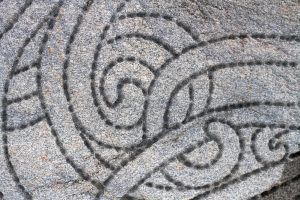 Last time, we visited two compelling arguments supporting the notion that narrative facilitates recall. First, stories slide naturally into our minds because narrative is at the core of human existence, all the time intertwined with who we are and how we live our lives. And second, a well-told tale touches us on an emotional level. Other forms of discourse do not often do that.
Last time, we visited two compelling arguments supporting the notion that narrative facilitates recall. First, stories slide naturally into our minds because narrative is at the core of human existence, all the time intertwined with who we are and how we live our lives. And second, a well-told tale touches us on an emotional level. Other forms of discourse do not often do that.
Indeed, narrative has the power to enter our minds and transport us. When we follow a story, we journey with the teller to a different world. Implicitly, we project ourselves to a new mental location—the time and place where the story is happening—without ever leaving our static position.
Whereas facts and data feel outside us and distant, a story invites us inside. We respond to it because we feel as if we are there with the characters. As such, we absorb it eagerly with a sense of excitement and connection. Since narrative stimulates emotion in us, we are often able to remember it effortlessly.
Now, we turn our focus to one more characteristic that makes narrative stick in our minds. The structure of story itself helps us to remember in all its detail.
In our daily lives, trying to recall lists, or other random bits of information, can be a daunting task. In my university days, one of my fellow students told me of a technique she had learned to help her memorize material for examinations. She would imagine walking in a place she knew well, and she imagined “hanging” reminders at various points along her journey. Doing so allowed her to recall long lists of unrelated facts.
Though it never worked so well for me personally, I found my friend’s system intriguing. Then, years later, I read about a technique that was strikingly similar, called the Memory Palace. Judging from what I have seen and read, it seems to be quite a well-known technique today, one that numerous people seem to find useful.
The most common type of memory palace is constructed as an imaginary walk through a place you are perfectly familiar with, such as your house or your town.
Along your journey, you see specific locations that you regularly visit, and always in the same order. These places are called loci, which is indeed the Latin word for locations. Each of these spots represents a hook where you can hang an image as a reminder. The more you practice and use this journey in your mind, the more proficient you become at remembering things by visualizing them on your familiar hooks.
A simplified example might work something like this. You are going to the market for bananas, milk and tea, and your memory palace is the walking route from your home to the town center. So, you visualize a bunch of bananas hanging on the first “hook”, the inside upper portion of your front door. As you step outside, you are surprised to see a giant tea cup atop hook #2, which is the neighbor’s stone wall. Then, you turn onto the street in the direction of the market, and you notice a black and white cow on the corner of your property (your point #3).
When you arrive at the market, you retrace the imaginary journey to recall the items on your list. Of course, my example is quite small. Some practitioners of the palace system claim that they can use it to remember thirty items or more.
In truth, I have never used this technique long enough to judge its merits. What I find interesting now, though, is that I see the memory palace as a technique that imposes artificially some of the elements that narrative provides naturally.
Taking a walk in a familiar place gives a sequential structure to the mnemonic exercise, which is something that can certainly be helpful. Visualizing a series of hooks that you can use over and over also seems like a useful device. Since one can use the same mental journey over and over, the repetitive use of these hooks becomes second nature.
As such, the whole memory palace dynamic shows us why stories such as Paul Revere’s can remain so long entrenched in our minds. Narrative structures give the mind a number of helpful elements—a context, a series of sequential events, with hooks for our memories. And, story does all this with a natural flow, far better than any Memory Palace ever could.
Image: Flickr use Alan Levine
